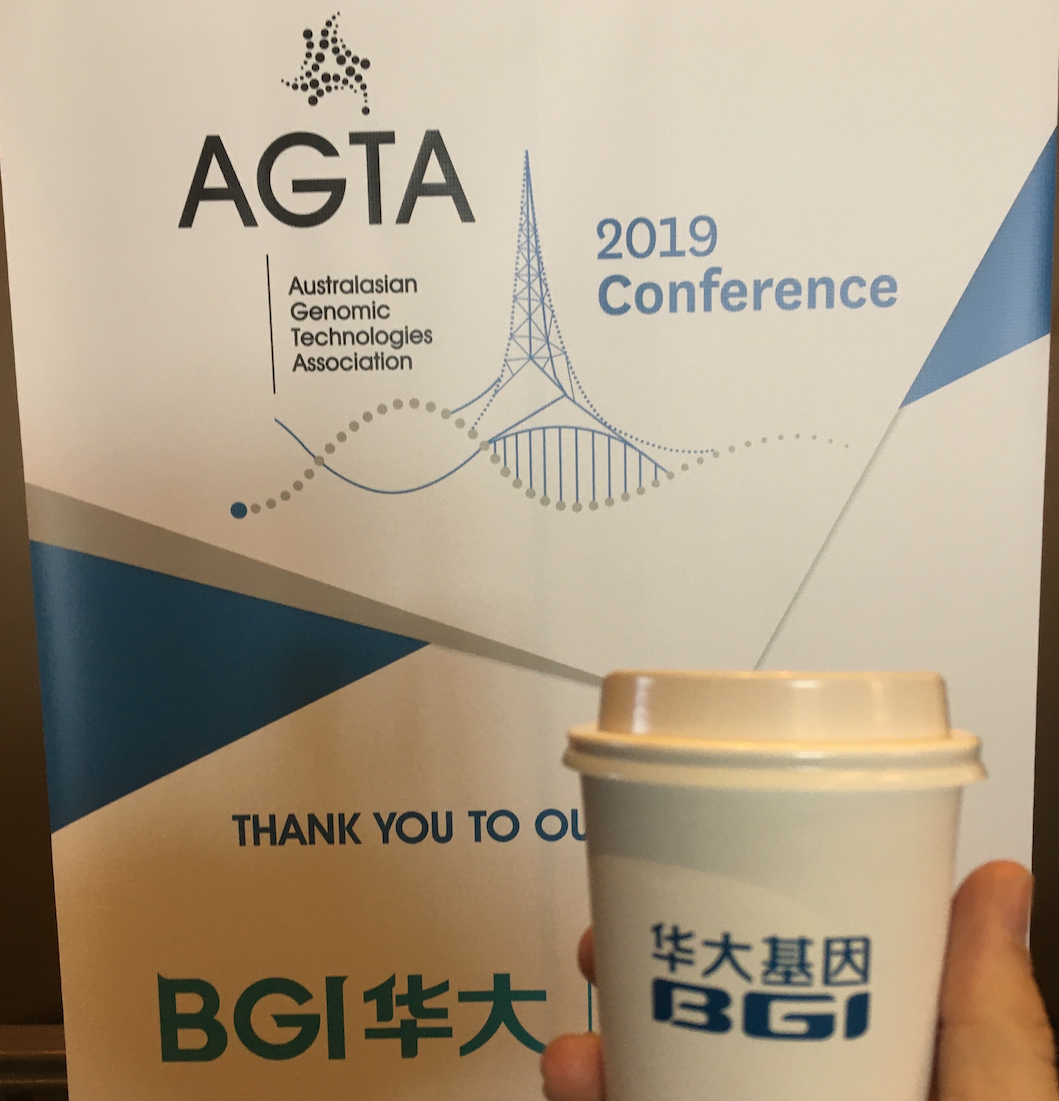AGTA was one of the first conferences I got to present at during my PhD so it was with great pleasure that I attended the 19th Australasian Genomics Technologies Association in Melbourne last week.
The conference brought together some fantastic Australian Genomics researchers as well as some high-profile international keynotes. At the forefront of the discussion was how new technologies like long-read sequencing and single-cell genomics was allowing unprecedented insight into how the structure of the genome influenced diverse phenotypes. I was also fortunate enough to get a chance to present our work (including GT-Scan2, VARSCOT and VariantSpark).
Up from @CSIRO is @dr_lwilson talking about CRISPR tools https://t.co/nIJtsydDkc and https://t.co/5YrE3BbWZp pic.twitter.com/1HUKEKl0jw
— James Ferguson (@Psy_Fer_) October 6, 2019
Structural Variants - the new SNPs
No genomics conference is complete without a thorough analysis of causative genetic variations, but while SNPs have gotten the majority of attention over the last few years there is a renewed focus on larger structural variations. New developments in long-read sequencing, such as Nanopore and PacBio, mean it's now easier to capture these larger variations, including duplications, large deletions/insertions, and inversions.
The opening keynote speaker, Michael Schatz, gave a great talk about how using Nanopore they've managed to sequence 100 Tomato genomes in 100-days, identifying a wide variety of structural variations that may give rise to important phenotypes. Another keynote, Evan Eichler, highlighted how accurately mapping the Structural Variants landscape is critical to appreciating the diversity of the human genome. He also introduced the Pangenome Project, an ambitious NIH funded initiative seeking to "generate and maintain the most comprehensive reference sequence of the human genome" over the next five years.
Single Cells Sequencing
Single cell sequencing continues to be a powerful tool, allowing researchers to interrogate biological pathways at incredibly high resolution. Andrea Bild showed how they can use single cell sequencing to track the change in tumour micro-environments in response to treatment, enabling a better understanding of what factors influence patient outcome. Exciting new breakthroughs in the field were also prevented. Xiao Tan presented a fantastic talk on his new tool SpaCell which combines single cell transcriptomics with spatial tissue imaging to gain new insight into how transcription was distributed within a cell. Andrew Adey talked about how they're pushing the limits of single cell sequencing by developing platforms for interrogating epigenetic status, including sci-ATAC-seq; for single cell assessment of chromatin accessibility.
Nothing beats a good title
A particular highlight of the conference for me were the excellent names of various tools on display. Ranging from STALLONE, to RAGE-seq and UNCALLED, the creativity of everyone was on display. However, it was truly a joy to hear everyone refer to raw Nanopore sequencing data as "squiggles". Thankfully, James Ferguson was on hand with SquiggleKit to help make sense of it all.
"Show me the squiggle!" - increasing the accuracy of nanopore reads with SquiggleKit and @Psy_Fer_ #agta19 https://t.co/1WjSsz2kPy
— Laurence Wilson (@dr_lwilson) October 7, 2019
Coffee is king
Any conference that offers free barista coffee deserves extra props... Thanks again AGTA!

AGTA is always a great experience, highlighting the fantastic genomics work being done in Australia and across the road. I'm excited to see all the large scale datasets becoming available and to see if our tools like VariantSpark can be of use in deciphering the genomics of health and disease (and tomatoes!).


